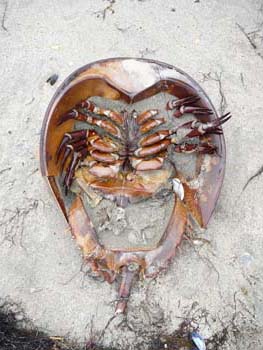
Shippensburg University is located in the Cumberland Valley of the Appalachian Fold and Thrust physiographic province of the eastern United States. Situated on the drainage divide for both the headwaters of the Conodoguinet (pron. con-a-daw-gwin-it) and the Conococheague (pron. con-a-ka-jig), Shippensburg is upstream from and contributes runoff, sediment, and other materials to the Chesapeake Bay and the world's oceans. Whether through the Susquehanna or Potomac Rivers our local streams are connected to an immense watershed that encompasses everything from our region to the Chesapeake Bay and the Atlantic Ocean, but also includes what is now referred to as the Global Ocean.
The great Potomac River, the ever so critical dividing line between the north and the south, and the Susquehanna, that carves its way through the glacially scoured Appalachian Plateau, meanders through the dense stands of conifer and deciduous forests of the northern highlands, and indeed erodes down to the ancient forests of the Pennsylvanian swamps long since buried, work incessantly to uncover and undo the record of life on Earth. Whether placid and peaceful, or raging and furious, these rivers are doing the work that they have been doing for centuries upon centuries, indeed millennia upon millennia... carrying away rock from the very mountains that gave them birth. As Africa was ripped apart from North America by great tectonic forces (during the reign of the first dinosaurs), not only did the rugged journey begin for these rivers but their birth coincided with the conception of the magnificent modern Atlantic Ocean.
The great ocean basin that demarcates our eastern shore, wages its own war on the materials given up to the sea by these great rivers. Whether through redistribution of sediment along the coasts or by wholesale removal of these materials to the deep ocean floor... wind, waves, and tides have worked tirelessly along with the efforts of running water to heal the scars of the great wounds of tectonic convergence long since extinguished. Mountains, greater in size than those of the modern Himalaya, once towered proudly above the Appalachian Trail. Today they are reduced to a mere shadow of their once immense stature. Season upon season, decade upon decade, these rivers pulverized, dredged, and conveyed rock and sediment to the sea. When their great work is complete and the mountains are no more, they will expire having lived a long life and having performed their required duties. Although it is impossible to say what the future will hold, it is for certain that the Potomac, the Susquehanna, or even their cousins the Delaware, Ohio or Patuxent, will keep on at their tasks until their job is complete. Humankind on the other hand, what is our job and what will our future be?
Season upon season, decade upon decade, these rivers pulverized, dredged, and conveyed rock and sediment to the sea. When their great work is complete and the mountains are no more, they will expire having lived a long life and having performed their required duties. Although it is impossible to say what the future will hold, it is for certain that the Potomac, the Susquehanna, or even their cousins the Delaware, Ohio or Patuxent, will keep on at their tasks until their job is complete. Humankind on the other hand, what is our job and what will our future be?
If we have learned anything from Earth's history at all, it is that species are temporary and fleeting. Most have already come and gone with little but a trace, a bone, or a tooth - is that going to be our future? We are tied to our rivers, our bays, and our seas. Without them we have nothing, without them we are nothing.
So what is our job and what will our future be? For the first time ever on Earth, the answer is ours to determine, but no longer should we neglect the health of our rivers, our bays, and our seas. We are guests of this Earth and our time... well our time... we shall see.
Sunday, September 30, 2007
OUR CONNECTION WITH THE SEA
Posted by
S. Cornell "Rock Doc"
at
9/30/2007 02:19:00 PM
2
comments
![]()
Labels: Chesapeake Bay, Conococheague, Conodoguinet, Potomac, Shippensburg, Susquehanna
Subscribe to:
Posts (Atom)




